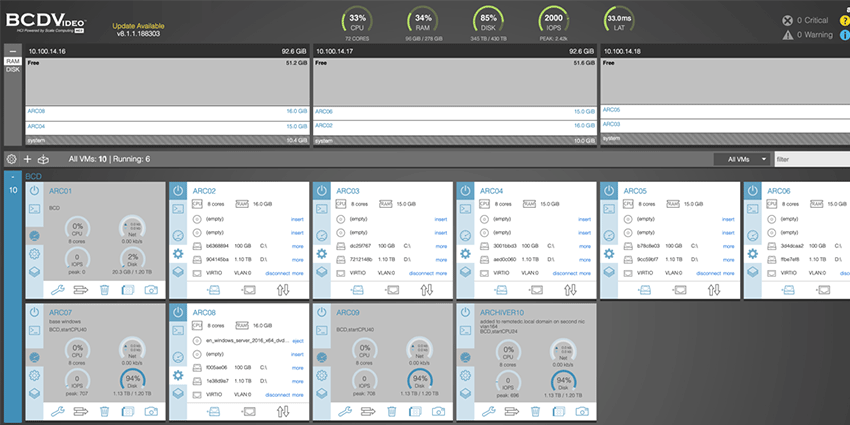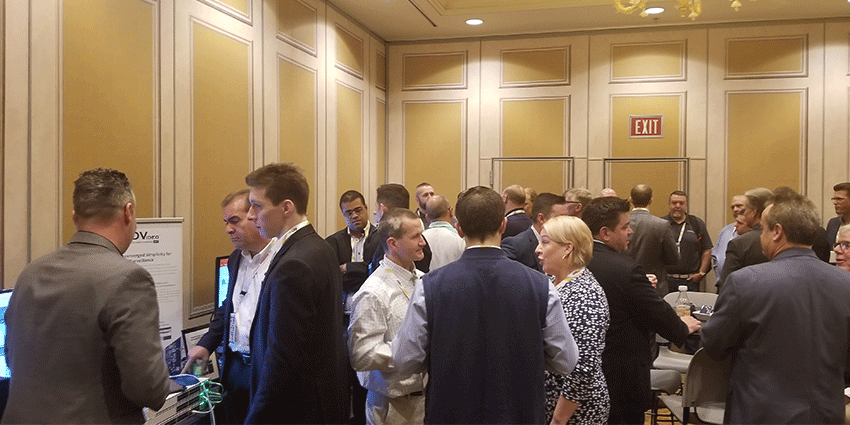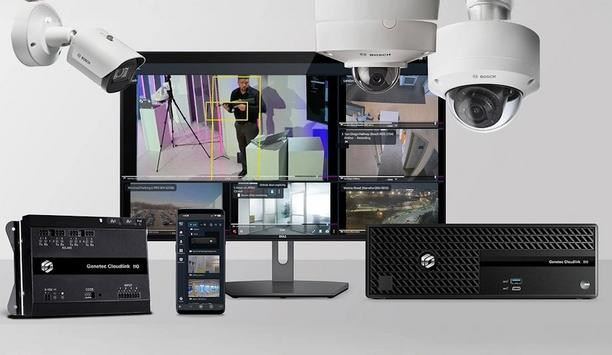Virtualisation offers multiple benefits to video surveillance systems, but the technology has been slow to adapt to the needs of video. However, the tide is turning. At ISC West, BCDVideo introduced a hyperconverged infrastructure tailored to video surveillance (HCI-VS) that answers the demand for higher and more efficient operating performance while also lowering the total cost of ownership for the integrator and end user.
Hyperconverged infrastructure solution
“ISC West attendees were able to get their hands on our hyperconverged solution and immediately see how easy it is to use and the benefit of adding virtual machines,” says BCDVideo’s Chief Technology Officer Tom Larson.
Security integrators were impressed that BCDVideo continues to adapt technologies"
Virtualisation was just one of the innovations in BCDVideo’s demo room. Many integrators and end users found their way to the conference room, located not far from the exhibition hall, and BCDVideo was also featured at partners’ booths on the show floor. “Security integrators were impressed that BCDVideo continues to adapt technologies to the video surveillance space,” says Larson. “BCDVideo ‘gets’ them, but often IT does not. The HCI solution is purpose-built for video, and it works.”
Server, storage and networking
BCDVideo’s HCI-VS is a virtualised, video-optimised and highly available infrastructure. It combines the server, storage and networking into one platform. Powered by Scale Computing’s HC3 software, BCDVideo’s HCI is a scalable, node/cluster-based infrastructure that enables integrators to virtualise their physical security appliances and software, meaning fewer devices need to be deployed and maintained. Physical security integrators can create an infrastructure that provides high availability to the VMS"
“More importantly, our HCI makes it easier than ever before both to quickly create and deploy virtual machines, and to manage video surveillance infrastructure,” says Larson. Some of the unique needs that HCI-VS serves are those of multi-faceted projects involving video recording, access control, building management, etc.
With HCI-VS, separate appliances are not needed for each of these tasks, which enables better use of hardware, reduces overall rack space and power/cooling costs. Essentially, this solution eliminates the “pizza box” model and serves the need in the marketplace where always-on video and high availability are necessary, and especially in situations where loss of video data cannot be tolerated, says Larson.
 |
| Simplified graphical user interface (GUI) makes it easy for integrators to implement systems that use hyperconverged technology |
Tolerant to hardware failure
“By leveraging the concepts of hyperconvergence, physical security integrators can create an infrastructure that provides high availability to the video management system,” he says. “When components within a video management system are tolerant to hardware failure, it results in less loss of data and continual access to the data from the failed component. You always have access to the video data even if the hard drive fails.”
Defining virtualisation
Virtualisation is the act of creating virtual copies of physical resources, including, but not limited to, compute, memory, storage, and network resources. This is achieved by employing software to manage all physical resources, known as a hypervisor.
As servers become more powerful, the discrepancy between software and hardware capabilities result in inefficient use of resources. “By partitioning the hardware resources into smaller virtual environments, we can create multiple virtualised servers that share a common set of resources,” says Larson. “By sharing this common set of resources, the virtualised servers utilise the resources more efficiently with less waste.”
 |
| Integrators and end users flocked to BCDVideo's demo room at ISC West to try out the new hyperconverged solution |
Education and physical security
Learning about the benefits of why to virtualise and applications will be a first step”
A challenge to greater adoption of virtualisation in the physical security industry is education. “Some security integrators will need to step out of their comfort zone,” says Larson. “Virtualisation for video has been slow to adapt, and other solutions are complicated. IT technology applications traditionally have not worked in the space either. Learning about the benefits of why to virtualise and applications will be a first step.”
HCI-VS in new verticals
While HCI-VS is vertical-market-agnostic, the solution is suitable for school districts looking to consolidate their hardware, for hospitals and the healthcare industry in general, for the rapidly growing cannabis industry, any mass transit system, as well as for Fortune 1000 companies, to name a few. “Our virtualised solution especially appeals to these verticals because of the number of cameras, the need for 24/7/365 video recording and extensive data retention requirements, and where loss of video data cannot be afforded,” says Larson.
Purpose-built solutions
BCDVideo’s HCI-VS is the latest example of products BCDVideo is creating for the physical security industry. “We purpose-build and engineer our solutions specifically for video surveillance with the ability to scale-out as needed,” says Kelly Kellen, BCDVideo’s Director of Marketing. “We engineer new products to address problems in the marketplace. Our CTO is really looking at the market and studying the security integrator’s pain points. Then we engineer solutions to best serve them.”








